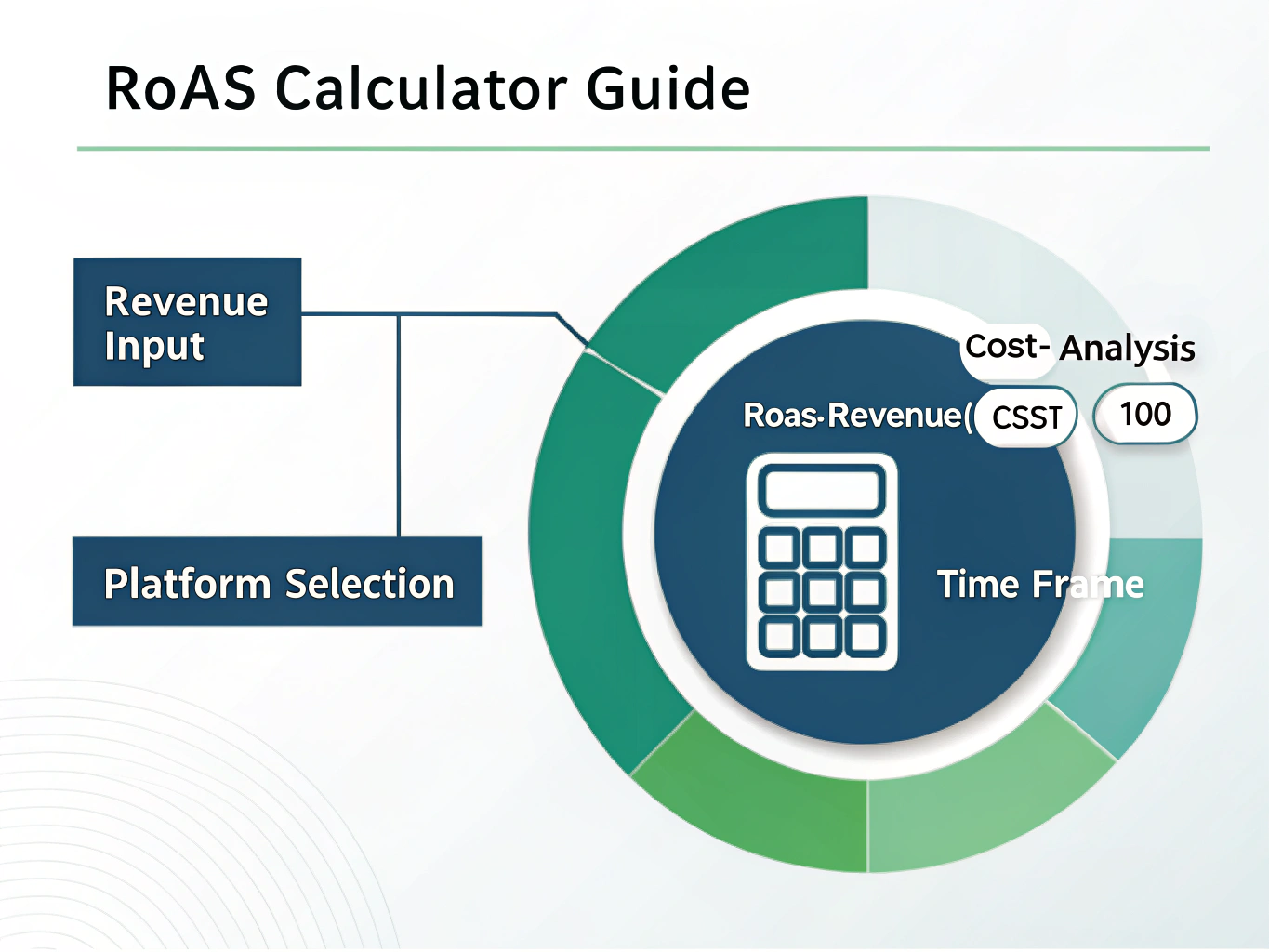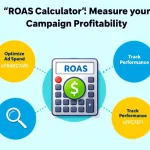Is this tool helpful?
How to Use the ROAS Calculator Effectively
Follow these steps to accurately measure your Return on Advertising Spend (ROAS) and analyze your advertising campaign’s performance:
- Campaign Revenue: Enter the total revenue your campaign generated. For example, an online course provider earned $18,500 or a local restaurant generated $9,300 in sales during the campaign period.
- Campaign Cost: Input the total costs spent on the campaign. Examples include spending $2,750 on paid ads or investing $5,200 in marketing efforts.
- Advertising Platform: Select the platform where your ads ran, such as Google Ads, Facebook, or another platform. This helps you compare results by channel.
- Campaign Duration: Specify the time frame of your campaign, such as “February 2024” or “Last 60 Days,” to contextualize your performance.
Return on Advertising Spend (ROAS): Definition and Benefits
Return on Advertising Spend (ROAS) measures how much revenue your advertising campaign generates for each dollar spent. It helps you assess which campaigns bring real value and optimize your advertising budget.
ROAS is calculated using this formula:
For example, if a campaign costs $3,000 and generates $15,000 in revenue, the ROAS equals (15,000 ÷ 3,000) × 100% = 500%, meaning each dollar spent earned five dollars back.
Why ROAS Matters in Digital Advertising
- Measure Efficiency: Know how effective your campaigns are at generating revenue.
- Optimize Spend: Redirect budget toward high-performing ads and platforms.
- Compare Platforms: Evaluate differences between Google Ads, Facebook, and other channels.
- Improve Strategy: Use results to plan future campaigns with better ROI.
Practical Usage Examples of the ROAS Calculator
Example 1: Retail Promotion Campaign
- Campaign Revenue: $50,000
- Campaign Cost: $10,000
- ROAS Calculation: (50,000 ÷ 10,000) × 100% = 500%
This means for every dollar spent on ads, the retailer earns $5 in revenue, indicating an effective campaign.
Example 2: Service Industry Campaign
- Google Ads Revenue: $30,000
- Google Ads Cost: $7,500
- ROAS Calculation: (30,000 ÷ 7,500) × 100% = 400%
Here, the campaign generates $4 for every advertising dollar spent, meeting a common performance benchmark.
Key Benefits of Using This ROAS Calculator Tool
- Instant Insights: Quickly calculate ROAS without manual formulas.
- Accurate Tracking: Capture revenue and costs precisely to evaluate profitability.
- Platform Awareness: Identify which advertising channels deliver the best returns.
- Data-Driven Decisions: Use ROAS results to adjust budgets and enhance campaign strategies.
- Simple Analysis: Understand your marketing efficiency at a glance, saving time.
Industry-Specific Applications of ROAS Analysis
E-commerce Businesses
- Evaluate product category advertising performance
- Optimize seasonal sales campaigns
- Track ROI of promotional offers across platforms
B2B Service Providers
- Assess lead generation campaign effectiveness
- Improve marketing funnel efficiency
- Allocate budget among various service lines
Digital Marketing Agencies
- Demonstrate campaign value to clients
- Benchmark against competitors and industry standards
- Guide adjustments to strategies and budgets
Best Practices for ROAS Monitoring and Analysis
Setting Realistic Benchmarks
- Use industry-specific ROAS averages as reference points
- Consider your profit margins to determine sustainable ROAS targets
- Factor in customer lifetime value for long-term assessments
Regular Performance Reviews
- Track weekly campaign results for timely optimizations
- Conduct monthly deep dives for strategic insights
- Analyze quarterly trends to inform broader marketing plans
Frequently Asked Questions About ROAS
What is a good ROAS value?
A ROAS of 400% (or 4:1) is generally considered strong across industries. However, your ideal ROAS depends on your profit margins and business goals.
How often should I calculate ROAS?
Measure ROAS weekly or bi-weekly for active campaigns to make necessary adjustments. For strategic planning, monthly or quarterly reviews work best.
Can ROAS be negative?
ROAS is always expressed as a positive percentage, but values below 100% indicate that your advertising costs exceed revenue generated.
Should I track ROAS or ROI?
ROAS focuses specifically on advertising effectiveness. ROI measures overall profitability, including all operating expenses. Use ROAS for campaign analysis and ROI for broader financial performance.
Important Disclaimer
The calculations, results, and content provided by our tools are not guaranteed to be accurate, complete, or reliable. Users are responsible for verifying and interpreting the results. Our content and tools may contain errors, biases, or inconsistencies. Do not enter personal data, sensitive information, or personally identifiable information in our web forms or tools. Such data entry violates our terms of service and may result in unauthorized disclosure to third parties. We reserve the right to save inputs and outputs from our tools for the purposes of error debugging, bias identification, and performance improvement. External companies providing AI models used in our tools may also save and process data in accordance with their own policies. By using our tools, you consent to this data collection and processing. We reserve the right to limit the usage of our tools based on current usability factors.







